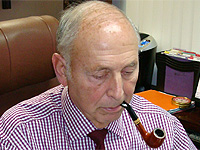 Nat Sherman is a world-renowned purveyor of fine luxury tobacco products. Their store in New York City is about to celebrate it’s 80th year.
Nat Sherman is a world-renowned purveyor of fine luxury tobacco products. Their store in New York City is about to celebrate it’s 80th year.
You will find all types of luxury tobacco, from the famous 100% additive-free natural tobacco cigarettes like MCD’s and Naturals, to premium cigars, and of course, pipes and pipe tobacco. Nat Sherman is a family-owned and operated business currently headed by the namesake’s son, Joel Sherman. Mr. Sherman graciously took time out of his busy schedule to chat with us over the phone.
Being a man of great experience and knowledge in this business, I decided to start out by asking him for a brief background and history of the company and how he has seen things change over the years.
PipesMagazine: Mr. Sherman, you grew up with your family in the tobacco business and Nat Sherman continues to be a family run business today. How many years have you been around the business and how many actively involved in it?
Joel: Well, we can say I’ve been around it for 70 years I didn’t actually get into the business until about 55 years ago. I started working in the store at 1400 Broadway and I did that on the weekends and after school.
PM: And in that time, can you tell us in general terms, how you’ve seen the luxury tobacco business and U.S. culture around it change over the decades and then more specifically, how Nat Sherman fits into that picture?
Joel: Well, I think that’s a book in itself. The tobacco business, we have to take it product by product; for cigars, cigarettes, and the pipes. An expensive cigar was, when I started in the business, was 3 for $1 and that was really something good to have. The nature of the business changed; well, actually, it didn’t change dramatically until the Cuban Embargo. From the time of the Cuban Embargo, many new products were developed.
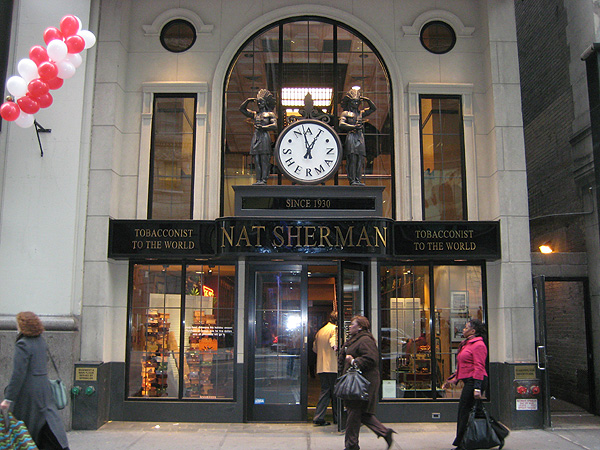
At first there was an attempt by the expatriates of Cuba to manufacture the same thing they always had in the Canary Islands. However, that didn’t work out too well and it was when they went back into the Caribbean basin and their children started to come out of agronomy schools and they used to say hey, dad, what about aging the tobacco, what about making blends and chilling the ammonia out of it? We started to see a whole new type of tobacco product created, which was much more palatable with complex taste and flavor, more people, including women could smoke them. Not that I think women smoke a lot of cigars, but they’re able to take a puff or two or as many puffs as they want without getting any ill effect.
That made the largest change. Up and before that, I know as a manufacturer, we were the first to come out with a cigar for $1 or $1.50. I remember similarly when I worked behind the counter, boy, you knew the customer’s who were going to come in everyday for their $1 or $1.50 cigars, something of that nature, and they were really outstanding people. So we went from the 25 cent, or 3 for a dollar, cigars, to the $1 – $1.50 cigars.
There was also a change in the smoking style, which I think is maybe a little more distant in the timeline. I used to come into work and I used to light up a cigar at around quarter to eight in the morning and take a cup of coffee and smoke all day. That was very much the way of many people. The early Cuban’s and the Tampa-made cigars …
PM: So this is in the 50s and 60s perhaps?
Joel: This was about the 60s.
Joel: I guess it was the 60s; 50s or 60s. It was very common to smoke a cigar all day long. I smoked 6, 7 a day, maybe more. With the advent of the change in tobacco; first with the loss of the Cuban leaf and then the loss of a lot of Tampa manufacture, and the rise of the Caribbean base cigar, people started to smoke more for flavor than they did for habit. And I think that’s where we are today, where if someone smokes a cigar for the enjoyment of the cigar, it’s for the taste of the cigar, not as a habit. I think that’s the biggest change that you’ll see in the cigar business predicated mainly on the kind of blends and the way the cigar’s presented. It’s more like a fine wine or something of that nature than it is a habit that you take and you chew on the end of the cigar and be at it all day long.
PM: So that sounds like a positive change.
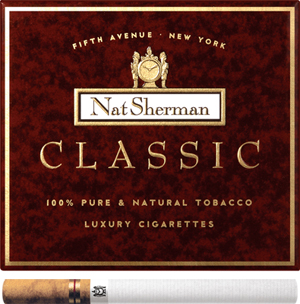 Joel: Yes, definitely a positive change, quite so. The cigarette business is something else again. It has been maligned beyond belief and actually, I’m not allowed to say a lot about it because I signed the MSA. The fact that it is maligned as it may be, I think there are more smokers than the figures tend to say. Most people are embarrassed to admit they enjoy smoking because it is not socially acceptable. Though if you go to a social function or social situation where smoking is permitted, you’ll see quite a few people smoking who would answer “no” when asked on a survey if they smoked.
Joel: Yes, definitely a positive change, quite so. The cigarette business is something else again. It has been maligned beyond belief and actually, I’m not allowed to say a lot about it because I signed the MSA. The fact that it is maligned as it may be, I think there are more smokers than the figures tend to say. Most people are embarrassed to admit they enjoy smoking because it is not socially acceptable. Though if you go to a social function or social situation where smoking is permitted, you’ll see quite a few people smoking who would answer “no” when asked on a survey if they smoked.
We did one for the Kentucky Derby Day at Eleven Madison Park Restaurant in New York in an outside venue, which is a fancy restaurant, and I would say that out of the 350 people that were there to watch the Kentucky Derby and celebrate, 325 of them were smoking, and enjoying it as part of the good life and cigarettes were very prominent. And of course, Nat Sherman is the maker of the all natural cigarette and probably the most well-known in the country. We’ve led in style and we’re the first to make a very narrow cigarette, 22 millimeter cigarette, and all of the Nat Sherman cigarettes have always been natural tobacco.
The smoking of the Nat Sherman cigarettes has not changed so much. It’s never been a cigarette for a chain smoker. That’s not the kind of product we make. Our cigarettes follow the cigar line and the fact that it’s a good product, it’s satisfying, and you smoke it with reserve and at better moments because its natural and it has a real flavor.
PM: The Nat Sherman cigarettes are certainly in a class of their own.
Joel: Well thank you. I would assume that pipes are of major interest to you?
PM: Yes, they are.
Joel: That’s where I started my career in the tobacco business. The Nat Sherman company had a case of Kaywoodies and that was our pipe department. When I came in to the business, I couldn’t challenge my father on cigars and cigarettes, so I decided to go the pipe route and I built a rather extensive, I think it was probably the largest pipe department in the city of New York and maybe in the country. We built a large pipe department and over the following number of years I traveled around the world, traveled to Europe and met people like Monty Barling, Alfred Sasieni, Alan Adler. These were the giants of the pipe business in those days. I met with them in their factories and in their homes and got quite an education in pipes.
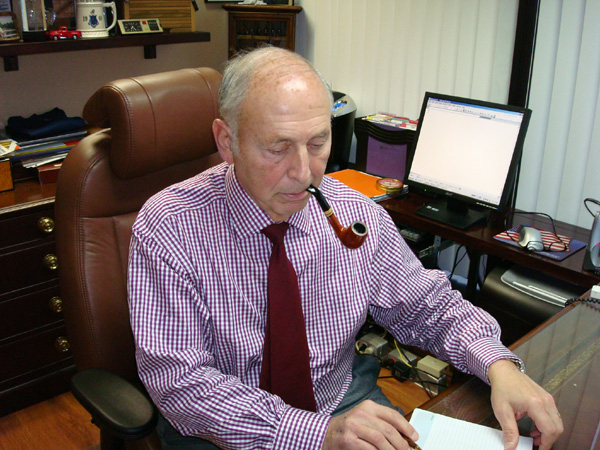
PM: Okay, and we’re going to come back to pipes some more, but before we go too far, can you tell me briefly how did the Nat Sherman company start and then evolve into what it is today, and is there anything different from the early days; anything different or the same between then and now?
Joel: Well, the history of the Nat Sherman Company is well known. My father was in the nightclub business with his brother in 1930. They ended up closing the nightclub and he opened up the store on his own. If you go back to the timeline, 1930 was still prohibition.
Joel: And that’s why the nightclub, which was a speakeasy, really, … they saw the writing on the wall and they got out of the business and my father had nothing to do at the moment. But he did own a half interest in a company called Traub Brothers and Bear, which was a cigar manufacturer in New York, and I don’t know how that ever happened, but I wouldn’t be surprised if that was some gambling debt that he was paid off by his part ownership. He did not like manufacturing, it was not his thing, but that’s what he owned. In the meantime his good friend, Abe Daverges , was putting up a building. He was building 1400 Broadway, which was the center of the garment business and it was a big building, it was a beautiful building, it was 38 floors, and it was going to be; and it became the central hub in New York. When he got to the 34th floor, he ran out of money, so my father loaned him the money to finish the next four floors and then he said “Nat, what can I do for you? You want part of the building?” He goes “well, I’ll give you a retail store on the main floor, right in the front of the building and he gave him the first store. We had three floors actually. My father said what am I going to do with a store? He owned part of a cigar manufacturing business, so why not sell cigars? He was a great merchant, had great packaging ideas, and could get things done and so it happened.
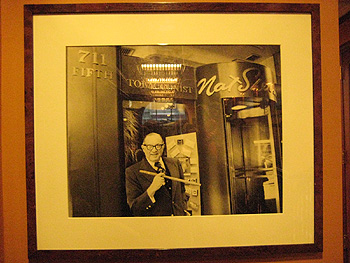 |
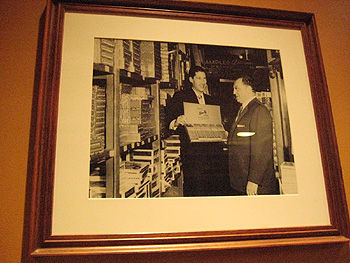 |
| Click for Larger Image | Click for Larger Image |
Letters from Celebrities that enjoy Nat Sherman Products
(Click on the Images for enlarged versions you can read)
PM: Well, there’s a lot of people that are happy that that happened. Now, is there anything different from…
Joel: How did it change?
PM: Yes.
Joel: There are people that go backwards and forwards and standing still is not an option. Why I never believed in the concept of someone saying oh, I’m a survivor. To be a survivor in my book means nothing. I mean, it’s giving up; it’s losing.
PM: You’re just kind of hanging on.
Joel: Yeah. I believe in the Vince Lombardi Habit of Winning. He was a great football coach of Green Bay, and I believe in those principles. The concept that winning is a habit and losing is not an option.
Joel: That’s how we have maintained our leadership and the way I believe we’ll continue to do.
PM: Just from being in the store and talking to staff in the store and in your office, I can certainly tell you guys run a tight ship.
Joel: Well, it’s not as tight as it is a family ship because when I say a family, we firmly believe in doing things perfectly, and correctly, and if you’re going to do it, do it right. We have a very fine staff and many people have been with us for over 20 years. We have very little turnover.
We believe in having good moral conduct and sometimes get annoyed at the insinuations that the tobacco business is not ethical and moral.
PM: I agree and you certainly run a very professional business. Now, talking about present times, it’s been reported, and actually I’ve heard this from different people in the business; different retailers, different pipe manufacturers and tobacco producers, and earlier this year in February, the Wall Street Journal published an article kind of saying the same thing, that the pipe smoking market is in a growth stage this year and some of it they’re even attributing to younger people getting into it again. Have you seen this and if so, what do you attribute it to?
Joel: I haven’t seen enough of it to make it really look like a trend, though it may well be. I think that people’s leisure time and the cyclical nature of the product, may have it coming back again.
While I think it may be more anecdotal than factual, I do sense there’s a certain amount of it, but not enough to say it’s a real trend. I think with young people; I always thought that the pipe business was driven a great deal by image and I can’t think of any great smokers that we have who are smoking pipes. You don’t see people in magazines smoking pipes and professors don’t smoke pipes much anymore and I think we need the image people to be out there smoking a pipe, the Bing Crosby type of thing.
If Bon Jovi were to smoke a pipe, you’d see a tremendous increase in the business. (Laughter)
I think the pipe market is steady and may be growing a little bit, which is a change from a decline for years, but I don’t see a rush.
PM: Okay. Now, getting back to you personally, what got you started smoking a pipe and how long have you been doing so? 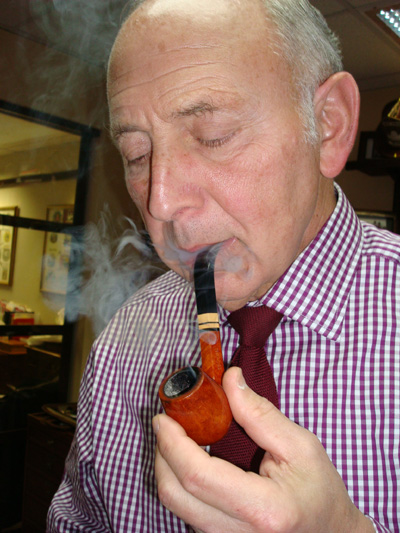
Joel: I’ve been smoking a pipe for 55 years. I started smoking a pipe mainly because I was trying to establish myself in the family business and all of the other corners of smoking were already established, so I started smoking a pipe. It gave me a corner to hang my hat in the business.
Joel: And I’ve enjoyed it ever since. I came down from our farm to the office this morning. Up there I would smoke almost exclusively a pipe as opposed to in my office, not quite as much.
PM: What are your personal pipe smoking rituals? How often do you smoke and what do you like to smoke pipe wise and tobacco wise?
Joel: Well, I think one of the things about pipes and cigars too is the plethora of shapes that you have to choose from. I think I am blessed because I have the ability to come in any morning and look at the dozen different kinds of cigars and decide which box I want to choose one from and the same thing with my pipe rack. I have rather good size pipe racks in each office. Whatever mood I’m in to smoke is what I will smoke. Whatever attracts me at the moment and I think that’s one of the nice things that you have about it; the artistic shape of a pipe, the well made pipe, the balance of the pipe. I tend to go for thicker walls because I think it smokes cooler. I used to smoke more straight pipes, but now I’ve gone to more bents because I think they balance better and my teeth are older than they were. But, the pipe is what spirit moves me and which pipe works for me at that moment.
For tobacco, I’m always tasting new tobaccos and testing and giving opinions to the rest of the staff on new blends. But, I make sure that that’s taken with a grain of salt. There’s only one expert in the pipe business and that’s the smoker; whatever he or she likes, that’s personal and nobody can tell you that one tastes better than another.
PM: If somebody came to you that hasn’t smoked a pipe before and they said gee, I’m thinking of trying it out, what would you advise?
Joel: Well again, I try and give information and then let them make their choice. The fact that the thicker the wall, the cooler the pipe is going to smoke, a bent will be easier to hold in the mouth than the straight. I’d show them how I believe the packing should be done. In many layers and not too snug, the more layers the better, then to light it, to tamp it down, and then relight it with a second match. These are what I think are sort of givens in the mechanics of smoking, but the choice of a pipe is individual.
I think when I started out, there were much simpler shapes. You only had 3 or 4 kinds of bents and there wasn’t the artistic stuff that you now have from Denmark and elsewhere. There were 24 shapes and that was it.
PM: The other day I was talking to Marty Pulvers on e-mail. He used to own Sherlock’s Haven in San Francisco.
Joel: I know Marty.
PM: Yeah, he currently sells pipes online. I told him that I would be talking to you and at the time, he thought that we had already spoken and he commented the following, so I’m quoting Marty now. “I’m originally a New Yorker and bought my tins of pipe tobacco at their original shop when I first started smoking a pipe in 1961 and Nat Sherman, an original, New York tough Jew was there everyday. Did Joel tell you the story of when he was behind the counter when the trigger man of the Chicago Valentine’s Day Massacre came in to get some stogies? It’s in his book and is a beauty.”
Can you tell us about that?
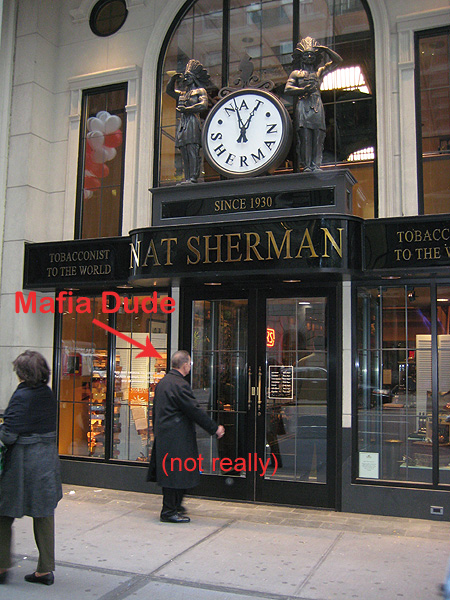 Joel: Well, our store was a neutral meeting ground. In other words, there were many New Yorkers, and many different mob families and it was a haven for questionable characters, if you want to put it that way, and many of them smoked cigars. We used to get our fair amount of trade of various questionable characters and many of them would come in, make their purchase and leave. Just standing outside the store would be their bodyguards. But inside the store, the cigars, which have always been a social lubricant … It was neutral ground. They’d greet each other, they’d shake hands, but they couldn’t shoot each other if they weren’t outside. Not that they actually did do it there, but there had been one person who made his morning trip to the store for his cigar who got shot a couple of blocks away, so smoking can do you in if you want to think of it that way.
Joel: Well, our store was a neutral meeting ground. In other words, there were many New Yorkers, and many different mob families and it was a haven for questionable characters, if you want to put it that way, and many of them smoked cigars. We used to get our fair amount of trade of various questionable characters and many of them would come in, make their purchase and leave. Just standing outside the store would be their bodyguards. But inside the store, the cigars, which have always been a social lubricant … It was neutral ground. They’d greet each other, they’d shake hands, but they couldn’t shoot each other if they weren’t outside. Not that they actually did do it there, but there had been one person who made his morning trip to the store for his cigar who got shot a couple of blocks away, so smoking can do you in if you want to think of it that way.
But, I’m working behind the counter and my father is looking over things, as he did in his chair on a special raised platform, and someone came in and he gave me a high sign, which was hardly noticeable, but I recognized it, and knew to give this guy good service, and I did and he was a very charming man. He bought some cigars and said a few words greeting my father and they knew each other from the days of when they had the speakeasy, uh I mean the nightclub. And I said nothing after he left because you just didn’t talk directly if you didn’t know who was listening, you didn’t know if the phones were bugged. After a while, my father gave me a nod, let’s walk outside to the street. We walked out to the street out front and he told me who my customer was, that he was the trigger man for the St. Valentine’s Day Massacre.
PM: And what was his name?
Joel: I wouldn’t have any idea anymore.
Joel: My father told it to me at the time, but we’re going back 50 years.
PM: Okay, now, coming back to the present, a disturbing thing occurred last month in October in New York City. Mayor Michael Bloomberg signed a new law making all flavored tobaccos illegal and I believe that goes into effect in February and I have a few questions about that. Why did this happen, what do you think about it, how does it affect your business, and what can we as citizens do about it?
Joel: Well, that’s a loaded question. Michael Bloomberg is vehemently anti-smoking, which is his prerogative. To push his beliefs and his feelings on the public, I think is unfair and inappropriate. The concept of flavorings and the law and flavor of tobacco really becomes extremely complex in regards to pipe tobacco and even cigarette tobacco, because you have many tobaccos and many cigarettes that are treated with different processes that are not characterizing flavors.
The cry that flavored tobaccos are made to attract the young is a catch all where they are trying to give the anti-smoking zealously purity like motherhood and all-American apple pie. The “flavorings” and then how that law will be understood or enforced to a degree, could take practically every tobacco product off the market.
PM: There are certainly some ambiguities in there.
Joel: Yeah, well, its unintended consequences, though I don’t think with Michael it’s unintended. I think he just wants to stamp out all smoking. He’s opposed to permitting smoking on the street, smoking in the parks, smoking on the golf courses.
PM: So when they write and sign these laws, they typically proclaim that it’s to save the children. I’m getting from what you’re saying that that’s just an excuse.
Joel: That’s just an excuse. I will say to you that I think the anti-smoking forces have been much more clever in their presentation than the (tobacco) industry, which has supposedly had a great history of advertising expertise. They have framed the argument that it is for the children, and it’s for the public health, and I think that could be questioned, and compared with other things.
I mean, if the medical industry admits to anywhere between 90,000-150,000 wrongful deaths due to malpractice and hospital inefficiencies, how many might there really be?
PM: We might have to ban doctors then…
Joel: Yeah.
PM: Using the same logic.
Joel: And then I can’t understand how with all of the new causes of cancer that they find; every week there’s some new product or there’s some new item that’s in common usage that causes cancer.
How come with smoking, that number has never gone down for the people who are all affected, who are injured by smoking? But if that number stays constant, and doesn’t impact on the total that’s attributed to smoking, all sorts of numbers of other groups don’t make sense. The numbers are suspect.
PM: Right. Do you have any ideas right now on what we might be able to do about this? Is there any actions you are taking or trying to take right now?
Joel: I’ve been one of the more outspoken people, even with the (MSA) restrictions. I try to stay within the law but it’s difficult. I had made a few thousand pins, a year ago, which were replicas of the early American flag, with the snake and the expression “Don’t Tread on Me”, which was proposed after the unfair tax on tea (in US colonial times) That was Ben Franklin move, and I think we have to take that attitude, don’t tread on me.
People, who are smokers, even social smokers or casual smokers, have to stand up for their rights. The right to smoke is given to us under the freedoms of the Constitution.
PM: A lot of these anti-smoking laws, rules, and regulations, they frequently use the reason or excuse that it’s to save the children. Another broadly trumpeted reason that they say we need to stamp out smoking is because of dangers of secondhand smoke. What’s your response to that?
Joel: Well, all I can say is that the federal court judge, Judge William L. Osteen, back a few years ago, denied the EPA the right to use secondhand smoke as a carcinogen because he felt the science that they did was absolutely slipshod and manufactured. So, that was in our favor. You notice the EPA will not comment on secondhand smoke because they’re under federal court restrictions not to.
PM: Exactly. It’s certainly obvious in many different areas that studies are done and they’re commissioned by people that already have an opinion on what the final conclusion is going to be and they just steer it in that direction.
Joel: Yeah. I mean, it’s the only situation that I know where you could grant money to do a study, when you come in telling them what the study is going to prove, not what you’re going to look for.
(Editor’s Note: Read about the the falsified secondhand smoke report here: http://www.smokershistory.com/etslies.htm)
Well, Mr. Sherman, that’s all the questions I have. Thank you so much for your time today.
It’s my pleasure.
Nat Sherman has an interesting outgoing message when you dial their phone number. Press play below to hear it.
Play
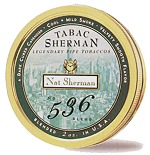
Nat Sherman Tabac No. 536
I purchased this, and it is excellent. I highly recommend it. It is an English blend, made up of Georgian, Virginias, black Cavendish, Mexican burleys and Cyprus Latakia tobaccos. It is a smooth and mellow blend with a spicy and rich taste.
Watch for our video interview and tour of the store coming next week!
Nat Sherman, Inc.
12 East 42nd Street at Fifth Avenue
New York, NY 10017
Ph: (800) 692-4427



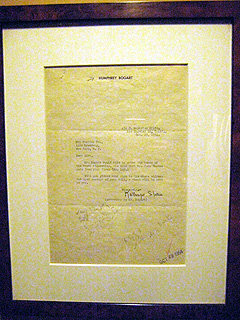

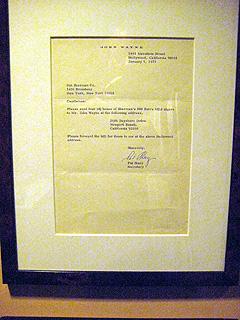
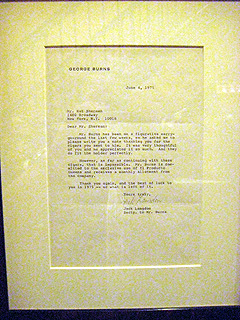
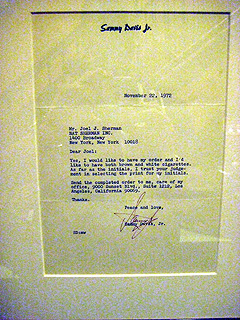
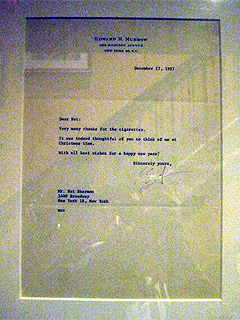
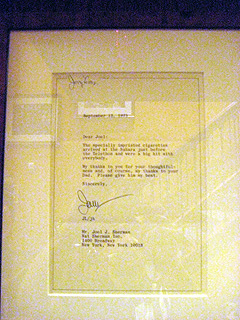













Great interview!
Ditto. Great interview. I was fortunate to go to school in New York City. Several times I was able to go to Nat Sherman. I got some cigars and enjoyed one with my son. This brings back fond memories.
There is a unique ambiance when you walk into Nat Sherman. It takes you back to the good ole days, when men were men, and we weren’t drowning in political correctness. It’s classy, friendly and warm … and they are experts on all things tobacco, plus all things manly.
They even have old fashioned shaving kits, smoking jackets … but I am giving away part of the next piece on Nat Sherman!
I kind of like the “don’t tread on me” pins idea. Maybe we should encourage smokers to purchase and wear these pins as a silent protest against the anti-tobacco movement.
This is a great interview. As a pipe smoker without any local tobacco establishments to visit this article was fun. If I ever get to New York I will make sure to stop by and visit.
Thanks for the article.
Classicrider21
Yes, Nat Sherman’s is a must see for any trip to Manhattan for anyone that enjoys any type of luxury tobacco.
I like when he said, “We believe in having good moral conduct and sometimes get annoyed at the insinuations that the tobacco business is not ethical and moral. ”
Did you listen to the audio at the end?
Thank you Kevin for a great interview. Your effort is much appreciated.
Thanks Mick! It can be a lot of work, but it is fun to do as well.
In a remarkably busy life, I have found great pleasure in the care and use of my pipes. Nat Sherman #536 has come to be a wonderful part of that experience. Knowing something of the company’s history only adds to it all. Thanks for yet another great article.